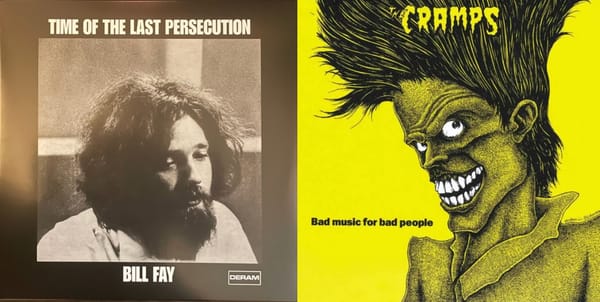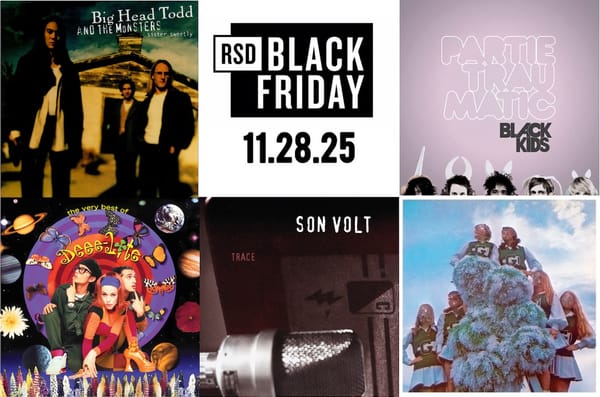Review: The lost sunshine pop of Eternity’s Children

The Los-Angeles-by-way-of-Mississippi group’s two albums are back on vinyl.
Eternity’s Children were never going to be superstars, but it wasn’t for lack of trying. Formed in the mid-’60s, the sunshine pop group became the talk of the club circuit in and around their stomping grounds of Biloxi and New Orleans. With the regional success of their debut single “Can’t Put a Thing Over Me” urging them forward, they decamped for Los Angeles with a baked-in repertoire of R&B covers and stoned soul originals. Once there, the band became victims of poor choices and ill fate.
They signed with a shady management group that gave themselves writing credit on the band’s material and, even as the Children made commercial headway with their 1968 single “Mrs. Bluebird,” kept most of the profits. Such chicanery led to the departure of the group’s principal creative force, keyboardist Bruce Blackman, before they had a chance to record their debut self-titled album, which was released on Capitol subsidiary Tower Records. Their efforts to continue the momentum of “Bluebird” with a second album, Timeless, also released in 1968, stalled out when it was decided to release the new LP in Canada only. A couple of singles followed the next year, but when Tower folded, Eternity’s Children soon followed suit.
Above all that, the band simply didn’t have the tunes that could have lifted them above the fray. Their sound shared more than a little bit of musical DNA with chart-toppers of the time like the 1910 Fruitgum Co. and the Cowsills: killer vocal harmonies and a palatable take on psychedelia that even a mother could love. And they had some killer support in their collective corner. Their debut was overseen by Curt Boettcher, the producer who had already helped the Association become superstars, and future Fleetwood Mac collaborator Keith Olsen, while Timeless was produced by Gary Paxton, the Bakersfield legend who was behind the boards for novelty hit “Monster Mash.” Yet as lovely as it is to listen to both of these full-lengths, nothing leaps out of the grooves in the manner of, say, “Along Comes Mary” or “Yummy, Yummy, Yummy.”
The albums, recently reissued on vinyl by High Moon Records, work best, I think, listened to as a whole. They aren’t conceptual by any means, as they’re still constructed from cobbled-together tunes written by other songwriters and a handful of their original compositions. But both records hold together surprisingly well under those circumstances. Each captures the spirit of the era with a touch of social commentary (“Rupert White,” “The Thinking Animal”), a healthy dose of bohemian daydreaming (Eternity’s Children features the songs “Flowers” and “Sunshine Among Us,” while Timeless consolidates matters with “Sunshine and Flowers”), and love songs both joyous and bittersweet.

Due to the presences of Boettcher and Olsen, the debut is the stronger of the pair. At the time, both men were working on Begin, the sunshine pop masterwork by the Millennium, a supergroup featuring members of the Music Machine and Sagittarius. Some of the dreamy spirit of that project carried over into the baroque arrangements of “Rupert White” and “Again Again,” the enchanting waltz that opens the album. Also, the producers opted to squeeze in a demo they had recorded, “You Know I’ve Found a Way,” which the Children weren’t involved with at any level. Timeless is far more straightforward and suffers a bit as a result. It does benefit greatly from vocalist/songwriter Linda Lawley being a stronger presence throughout on tracks like the bossa-nova-leaning “Sunshine and Flowers,” and some clever arrangements (check how the music shifts from a pleasant sashay to a gentle stomp on “Nature’s Child,” a tune co-written by Byrds member Clarence White). But in the end, everything gets a little too drippy and saccharine for its own good.
No matter how the music might hit you, it all comes across with welcome clarity on these new vinyl pressings. With no details to contradict me, I can only guess that Steve Stanley, the producer that oversaw these reissues, and mastering engineer Dan Hersch had a digital source to work from, but that doesn’t diminish the richness of the music one iota. The bottom end is particularly vibrant in each one, and the keyboards—a nice mix of electric piano, pipe organ, and piano—on Timeless pops throughout. High Moon has also packaged both albums with care. Each comes in a gatefold sleeve with copious liner notes written by Stanley, and the discs come inside poly-lined sleeves.
Great as it is to see Eternity’s Children getting some overdue recognition from places beyond the devoted scholarship of psychedelic pop—and great as it is to be able to get reasonably priced copies of their two LPs—you shouldn’t feel too bad that this project didn’t catch fire at the time. Lawley, who passed away in 2009, went on to have a nice career as a backup singer and scored some songwriting credits for artists like the Carpenters and Exile. Blackman, meanwhile, is still cashing royalty checks for the soft-rock mainstay “Moonlight Feels Right” by his band Starbuck. While not quite the stuff of the eternal, these kinds of small victories could have only been possible with the foundation Eternity’s Children built with these two lovely if minor albums.
Eternity’s Children | High Moon 1-LP 33 RPM • audio mastered from unknown source by Dan Hersch at d2 Mastering • lacquer cut by Clint Holley at Well Made Music • pressing plant unknown • black vinyl
Timeless | High Moon 1-LP 33 RPM • audio mastered from unknown source by Dan Hersch at d2 Mastering • lacquer cut by Clint Holley at Well Made Music • pressing plant unknown • black vinyl
Listening equipment
Table: Cambridge Audio Alva ST
Cart: Audio-Technica VAT-VM95E
Amp: Sansui 9090
Speakers: Electro Voice TS8-2



